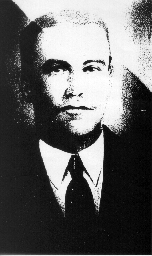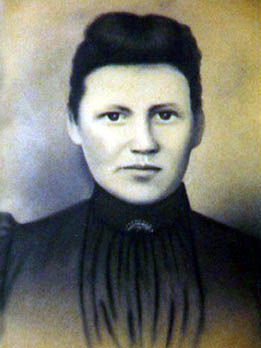


 |
 |
 |
On the twelfth of July in 1891, Elmer Weatherholtz and Minnie Silvious were married in Shenandoah County, Virginia. Elmer was born on January 15, 1870, Minnie was born September 11, 1874, both in Shenandoah County.
This may seem insignificant to most people, but Elmer and Minnie became the talk of the Shenandoah Valley in early 1896. By this time, the couple had two sons. Minnie was an attractive woman and received a lot of attention from other men. Elmer, a lawyer, was apparently quite jealous of the attention his wife received.
By 1896, the couple were separated and Minnie, her widowed mother Lydia Biller, and Minnie's sons were living on the farm of Peter Myers, near Forestville, Virginia. Minnie was working for Mr. Myers on the farm in exchange for room and board.
Elmer had been arrested and had been held in jail since the previous December for beating his wife while she was staying at his father's. He escaped from jail while awaiting trial, and had been seen in the area around the Myers farm, near Moore's Store, in southwestern Shenandoah County. Previous to this, he had been arrested several times for mistreating his wife, children and mother-in-law.

On the morning of Tuesday, February 4, 1896 between six and seven o'clock, Minnie, holding the hand of one of her sons, and Miss Nave, who also worked on the Myers farm, were on their way to the barn to milk. When they were only a few feet from the barn, a shotgun was fired through a window of the barn.
The shot was fired from a distance of not more than twenty-five feet. Mr. Myers, who was in the barn, heard the shot and the screams of the little boy. He ran out of the barn, only to find Minnie's lifeless body in a pool of blood. As he ran out of the barn, Myers reported that he saw a man running across the hill, but could not tell who it was.
At the inquest, it was determined that all but a few shot from the blast had hit Minnie in the forehead, killing her instantly. Minnie's son, who was holding her hand at the time, escaped uninjured. A manhunt ensued, resulting in the capture of Elmer Weatherholtz.
After a trial and conviction, Elmer was sent to the Virginia State Penitentiary in Richmond. On the tenth of February the following year, it was recorded that Elmer Weatherholtz died in the penitentiary of self-inflicted wood alcohol poisoning. The two sons, Bud and Lawrence, were living in Ohio with their grandmother Lydia Biller.
Elmer and Minnie's two sons eventually both became sheriffs of the same county in Ohio, one following the other in the office. One was a decorated veteran of World War I, and both had children, who also had children.
So, where's the mystery? In the 1940s, one of Elmer and Minnie's grandsons' wives says that she was introduced to a man by the name of Elmer Weatherholtz, her husband's grandfather.
If Elmer died in the penitentiary in 1897, who was this man the grandson's wife had been introduced to? Since Elmer was a lawyer, he most likely had some political acquaintances with clout. Was Elmer bought out of prison after a staged death? A death certificate does exist, but there is no known record of a burial.
Minnie is buried in the community where she lived and died. Moore's Store, to this day, is a quiet, peaceful farming community at the foot of the Allegheny Mountains. It is hardly a place where you would even imagine that, on a February morning in 1896, "one of the most cold-blooded murders that was ever perpetrated in this country was committed."
It appears that whatever else he was, Elmer Weatherholtz was a prankster. His occupation was not a lawyer; as it is told in verbal family histories he wrote (on his marriage record) "lawyer" as his occupation as a joke. As we genealogists tend to use the information on such documents as much as we can, this "lawyer" label has followed Elmer long after his deeds.
The story has it that Elmer's uncle, Dr. Charles Hall, used influence and more importantly, money, to get Elmer out of jail. To explain Elmer's absence from the Penitentiary in Richmond, his death was staged - and the death certificate was signed by ... a doctor, with the cause of death listed as "wood alcohol poisoning, self administered" - almost one year to the day after Minnie's death.
Verbal history says that Elmer returned to Shenandoah County and hid in the woods for years. He had an old shack that he lived in. Food and other staples were brought there for him by his family. It also appears that later on, Elmer moved to Ohio, where at some point, he met his grandchildren. So the mystery continued in Ohio. Did he assume another identity or did he continue to hide in a place where his deeds of 1896 were largely unknown? At this point, that is unknown.
As a descendant of Elmer's sister, I wondered what accounts my family had of this incident and found that there were no surviving tales of the murder in 1896. This was an incident they apparently preferred to forget, rather than pass on to future generations.
 |
 |
Sources: J. Floyd Wine - "Life Along Holman's Creek", 1982; The Free Press, February 5, 1896; John Wayland - "A History of Shenandoah County", verbal accounts by Rose McCloud, Steve Pence. Photos courtesy of Steve Pence & Jerry Silvious.
 |
Return to Shenandoah County VAGenWeb |